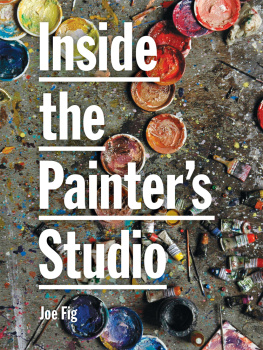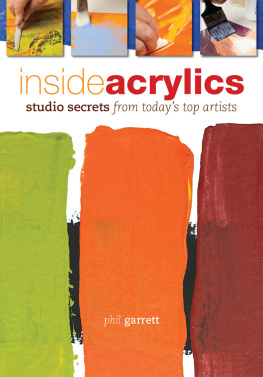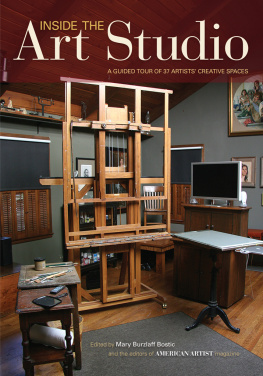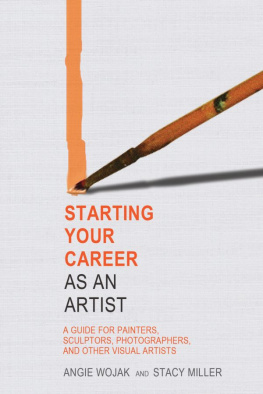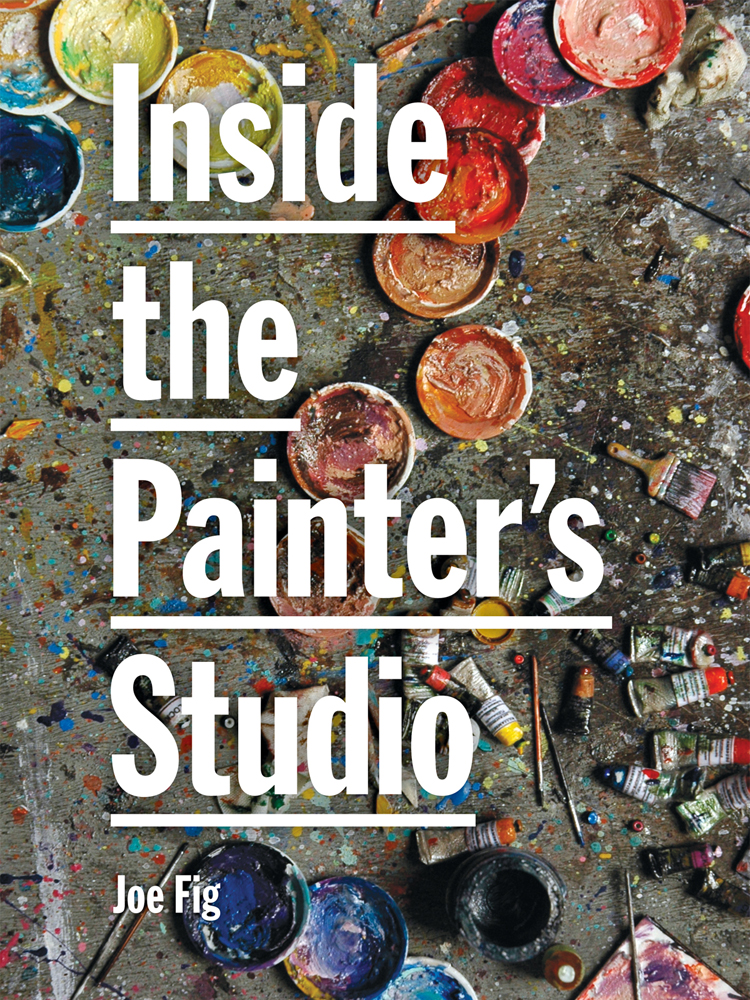
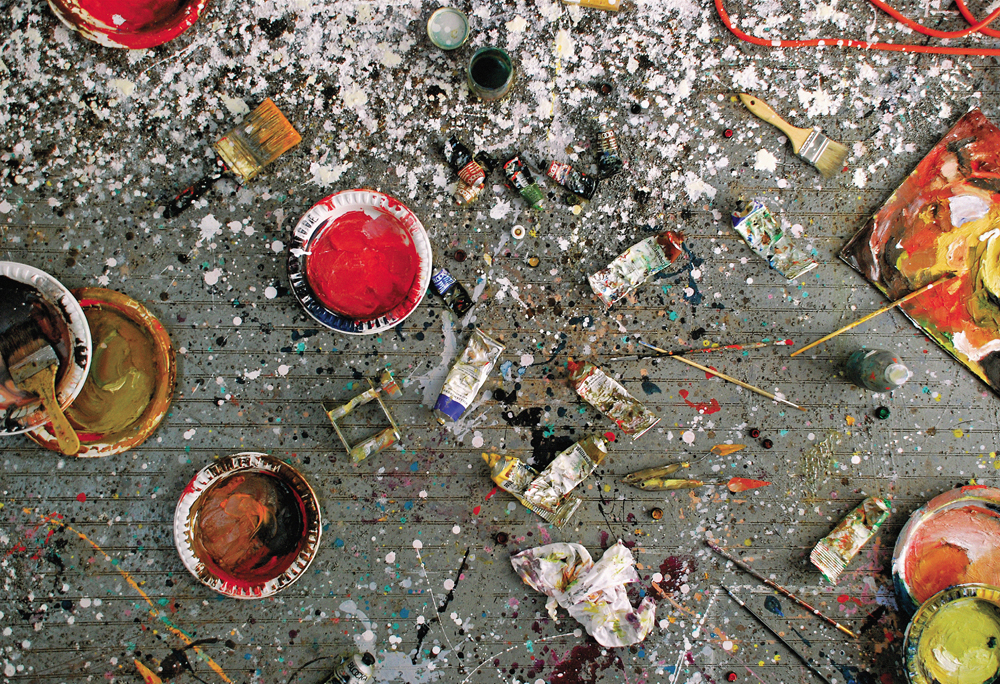
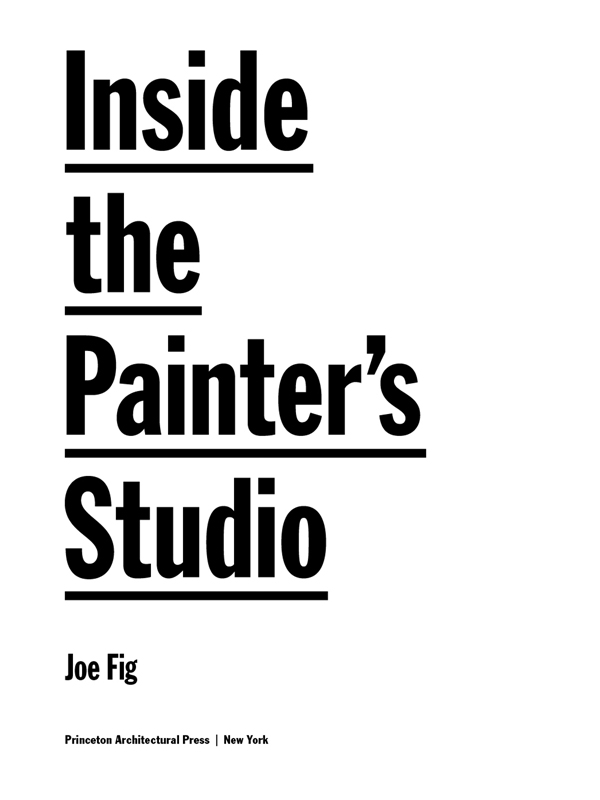
PUBLISHED BY
Princeton Architectural Press
37 East 7th Street
New York, New York 10003
For a free catalog of books, call 1-800-722-6657
Visit our website at www.papress.com
2009 Princeton Architectural Press
All rights reserved
12 11 10 09 4 3 2 1 First edition
No part of this book may be used or reproduced in any manner without written permission from the publisher, except in the context of reviews.
Every reasonable attempt has been made to identify owners of copyright. Errors or omissions will be corrected in subsequent editions.
All photographs Joe Fig
Pages 23: Inka Essenhigh (Floor Painting #1) (detail), 20078. Mixed media, 48 96 8 in.
Pages 225226: Inka Essenhigh: August 31, 2006 (detail), 2006. Mixed media, 11 11 9 in.
EDITOR : Linda Lee
DESIGNER PRINT EDITION : Paul Wagner
SPECIAL THANKS TO:
Nettie Aljian, Bree Anne Apperley, Sara Bader, Nicola Bednarek, Janet Behning, Becca Casbon, Carina Cha, Penny (Yuen Pik) Chu, Carolyn Deuschle, Russell Fernandez, Pete Fitzpatrick, Wendy Fuller, Jan Haux, Clare Jacobson, Aileen Kwun, Nancy Eklund Later, Laurie Manfra, John Myers, Katharine Myers, Lauren Nelson Packard, Dan Simon, Andrew Stepanian, Jennifer Thompson, Joseph Weston, and Deb Wood of Princeton Architectural PressKevin C. Lippert, publisher
Library of Congress Cataloging-In-Publication Data
Fig, Joe, 1968
Inside the painters studio / Joe Fig.
p. cm.
ISBN 978-1-56898-852-8 (alk. paper)
ISBN 978-1-61689-117-6 (digital)
1. Painting, American21st century. 2. PaintersUnited States
Interviews. 3. Fig, Joe, 1968 4. Artists studios in art. I. Title.
nd212.7.f54 2009
759.13dc22
[B]
2008053197
Preface
In 2000, as a study on artistic process and the myth of the sacred studio space, I began creating miniature sculptures of historically significant artists in their studios. Two years later my interest turned from historical to contemporary, mostly because I wanted firsthand source material rather than relying on books. I began a letter-writing campaign to artists, requesting whether I could visit them in their studios. My intention was to get a clearer understanding of the real, day-to-day practicalities of being an artisthow they live, work, and support themselves.
The late Michael Goldberg was the first artist who agreed to meet with me. We met at his studio on the Bowery, where he had been working for over forty years. Michael was a young seventy-seven years old, a bear of a guy. He was one of the leading painters of the second-generation abstract expressionists, and he had all the bravura of artists from that time. The studio visit was unique in that the artwork was not the main focus of discussion. I was interested in everything else: the making of the artwork, his creative process, the studio setup, his daily routine, and in particular his painting table. I photographed everything. At best I hoped I might be inspired to make a sculpture or painting based on my visit.
The studio was amazing. It used to be a gymnasium. It was huge. The ceilings must have been thirty feet high. From a loft you could look down at it as if you were in the balcony at the theater looking out onto a stage, and the performance was the artist at work. Michael had been in that studio for a long time, and before that it belonged to Mark Rothkothe history was palpable. Michael showed me crimson stains on the floor made by Rothko while painting his Four Seasons commission. I stayed for a long time; he showed me everything and told lots of great stories. It was an amazing experience for a young artist just starting out. I was inspired! When I left I wanted to get to my own studio and work...except I had one great, nagging regret: if only I had recorded our conversation!
I knew I couldnt let a moment like that pass again. Right then I devised a list of questions and titled it The Painters Studio: An Artists Questionnaire. Ive recorded every studio visitover fifty by nowsince.
And that is how this project began.
The interviews, photographs, and images of my artwork represent artists already in the history books and artists on the cusp of history. The range is broadfrom a 2003 interview with the then-twenty-six-year-old Dana Schutz to one with the eighty-four-year-old veteran Philip Pearlstein, and everywhere in-between. When I started out making sculptures of contemporary artists, I had not considered the by-products of my processthe interviews and photographs. As that material piled up, I began to realize that I had something important. I am pleased to have the opportunity to present it here. I hope you find it as rewarding to read as I did in putting it all together.

ABOVE:
Michael Goldberg in his studio, the Bowery, New York City, March 6, 2002
The Painters Studio: An Artists Questionnaire
- When did you consider yourself a professional artist, and when were you able to dedicate yourself full-time to that pursuit?
- How long have you been in this studio?
- Did you have a plan for the layout of your studio or did it develop organically?
- Has the studio location influenced your work?
- Please describe a typical day, being as specific as possible. For example: What time do you get up? When do you come to the studio? Do you have specific clothing you change into?
- Do you listen to music, the radio, or TV when you work? If so what, and does it affect your work?
- What kind of paints do you use?
- How long have you had your painting table, and how did you decide how to set it up?
- Do you have any special devices or tools that are unique to your creative process?
- Are there specific items here that have significant meaning to you?
- Do you work on one project at a time or several?
- When you are contemplating your work, where and how do you sit or stand?
- How often do you clean your studio, and does it affect your work?
- How do you come up with titles?
- Do you have assistants?
- Did you ever work for another artist, and if so, did that have any effect on the way you work?
- Do you have a motto or creed that as an artist you live by?
- What advice would you give a young artist that is just starting out?
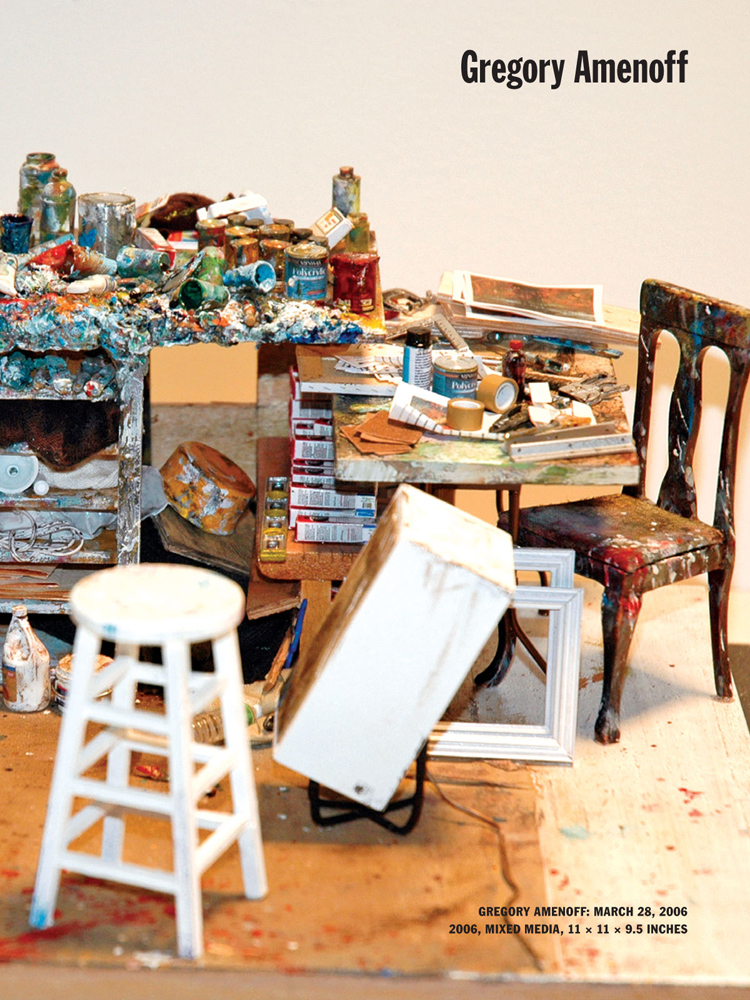
Gregory Amenoff
Chelsea, New York City
March 28, 2006
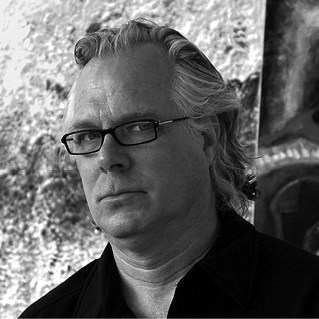
When did you consider yourself a professional artist, and when were you able to dedicate yourself full-time to that pursuit?
In 1971. I graduated from college in 1970. In 1971 I finished teaching elementary school for a year in Wisconsinwhich I did just to make a little moneyand I literally declared myself a professional artist. With no qualifications whatsoever, I moved east to New York and began painting as though I knew what I was doing. And then I pursued that continuously into the present, initially with odd jobshauling Sheetrock, having a sign company, and doing other things to make a livingthen with, you know, gaps where I was able to sell work and pursue painting full-time.

